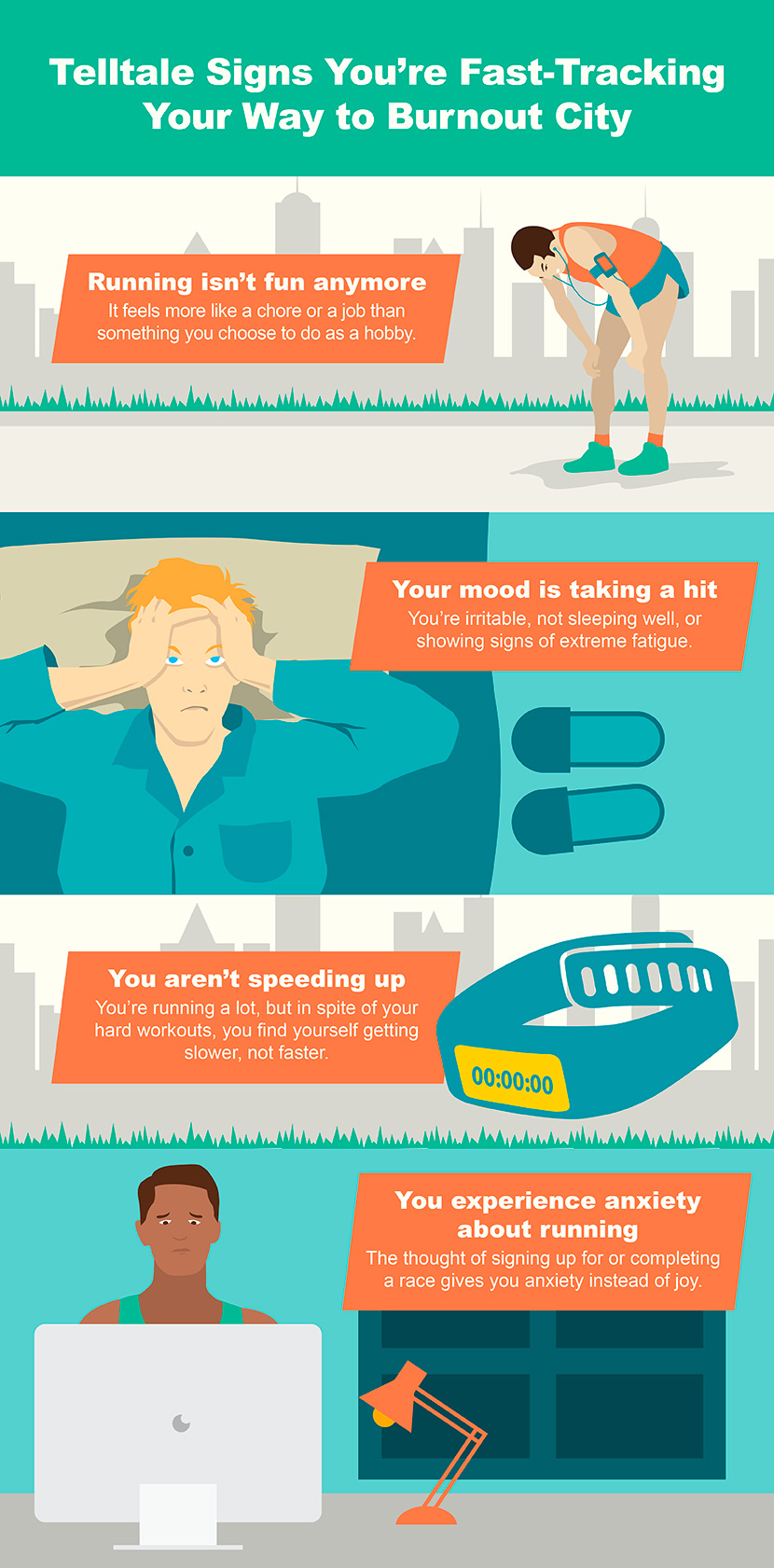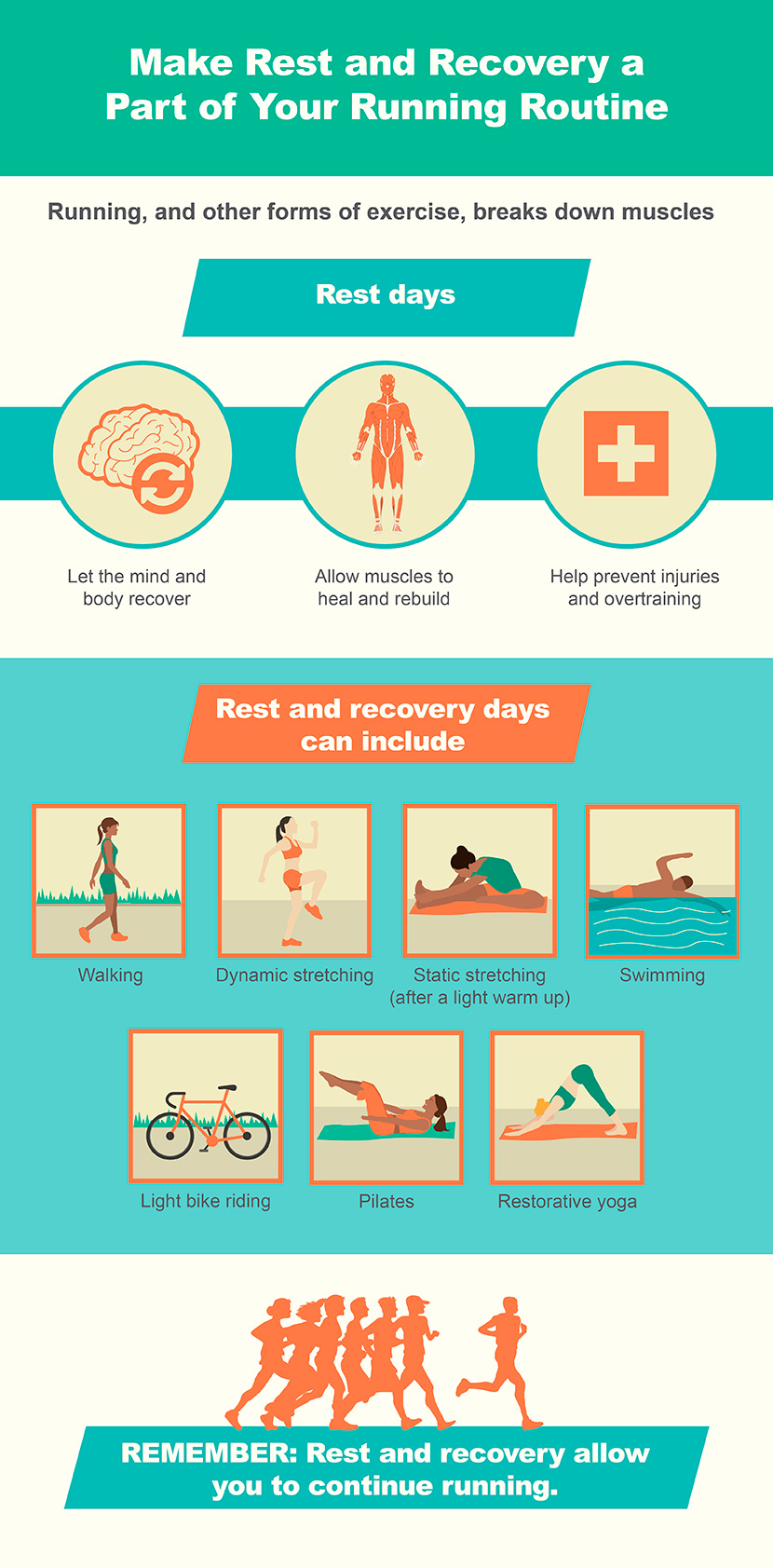Don’t Crash and Burn: How to Avoid Runner’s Burnout
I didn’t grow up running. I was a dancer who avoided the timed mile in gym class and saw running as punishment
for not listening to the rules of kickball or bowling. In college, I jogged one loop of an indoor track (wearing jazz sneakers) and declared running “the worst.”
But at some point in my post-collegiate life, I gave running a real, fair shot – and I was hooked. I traded my jazz sneakers for shoes that a clerk in a
speciality running store claimed would help my over-pronating feet, and I soon spent more time in Central Park and along the East River running path than
I did in the dance studio.
I signed up for a four-mile race, followed by a handful of half marathons. I ran my first full marathon a few years later,
and within moments of crossing the finish line, I was ready to sign up for my second. Well, that second marathon never happened
for me. After a few years of blissfully training for new races, new distances, and new speeds, I finally hit a breaking point.
Everything ached: my hips, knees, and shins. I wasn’t injured – at least not by a doctor’s definition – but my body didn’t feel good.
I was tired all the time, hitting my “easy paces” required a lot more effort than ever before, and the thought of getting up at 5 a.m.
to train every day felt daunting and uninspiring. I was completely burned out, and I just didn’t want to run. I bailed on the marathon
I had already paid for, and I spent the spring in spin classes and strength training instead of pounding the pavement.
Runner’s burnout isn’t an inevitable diagnosis for all runners, though.http://runnersconnect.net/marathon-training/marathon-burnout-help/ It can be easily avoided, as long as you’re willing to engage in a constant
dialogue between your mind, body, and emotions.http://runnersconnect.net/marathon-training/marathon-burnout-help/

Six Ways to Avoid Runner’s Burnout
1. Ditch The Data
As runners, we love our GPS watches and heart rate monitors. It’s easy to get addicted to seeing paces drop in real time with every mile you run.
But getting too attached to the numbers can be detrimental and quickly suck the joy out of running. Not every run will – or should – be your fastest.
Some runs are meant to be slow, short, long, or anywhere in between.
At least once each week, plan to run without a GPS watch, running app, or anything that measures your run.
Instead, run by feel. Go where you want, for however long you want, at whatever pace feels good that day.
You may choose to throw in a few sprints at the end, or you could opt to go slow and steady the entire way.
Take breaks to pet cute puppies or linger at a water fountain. The goal of this weekly run isn’t to push
your pace or try to set a record. It’s to remember why you run and appreciate your surroundings.
Running sans data is also a good way to get a weekly check-in with your body. Take note of how everything feels,
from your form to your muscles and joints, acknowledging any aches and pains along the way.
2. Run With Friends
Stop worrying about whether your friends are faster, slower, or less likely to need a bathroom stop than you.
The buddy system is a great way to keep your runs more exciting and keep you less focused on counting down the miles with every step.
If you’re with good company, you will likely chat for the duration of the run, which can make the miles fly by.
Plus, it’s a great way to get to know someone better. Many runners have a no-such-thing-as-TMI mentality,
which doesn’t translate to most other activities and social situations. So take advantage of running with a friend, and feel free to use each social run as a mini therapy or venting session.
Don’t have a steady group of friends who run? Hit up your local running store or gym to see if they have running groups you can join.
Chances are they do, and you can. As an added bonus, most casual running groups affiliated with running stores are free of charge,
and you can buy yourself a pre- or post-run treat. (Celebratory energy gel shots, anyone?)
3. Mix Up Your Workouts
Running the same five-mile loop at the same pace four times a week is a surefire way to make you good and sick of running in no time. Instead, change it up.
Each run should have a purpose, even if that purpose is to slow down and enjoy the scenery, whether you’re training for a race or not.
If you run four times a week, runs can include a tempo run or interval workout, an easy run, a hill workout, and a longer run on the weekend.
Each workout has you hit different paces and strive for different goals, which keeps things fresh, exciting, and challenging.
Even if you can map out a perfect five-mile out-and-back or looped course that starts at your front door, the convenience factor may eventually become
less appreciated. Drive your car to the next town over and pick a loop with new scenery, or ask a friend or family member to drop you off exactly five miles
from home and run back from there. Changing up your workout and surroundings help make each run feel new.
4. Opt For A Destination Run, Preferably Ending With A Sweet Treat
Say a new ice cream shop just opened in the next town over or that doughnut place everyone’s been raving about just debuted its fall pumpkin spice latte flavor.
Enter the destination run. Sure, it’s great to start and end your run at home, where your coffee and shower are waiting. But consider the
possibility of ending a run somewhere more fun, especially one where you can replenish with something delicious once the miles are under your belt.
You’ll be sweaty, so plan accordingly. Most low-key establishments are happy to serve a ravenous runner.
5. Cross-train
Cross-training is essential if you want a long, healthy running career.http://www.runnersworld.com/tag/cross-training
While running on its own offers great cardio benefits, throwing in a weekly spin class
or kickboxing workout helps increase strength, ultimately making you a faster, fitter runner.http://www.runnersworld.com/workouts/eight-benefits-of-cross-training
Strength and bodyweight training should also be added to the mix, even if that just means doing
squats while you brush your teeth or planking for the duration of commercials breaks.http://www.fix.com/blog/benefits-of-bodyweight-training/ Use your grocery bags
to do bicep curls on the walk back to your car or apartment, or drop for 10 push-ups every time the Today show anchors bring up Donald Trump.
And never underestimate the power of low-impact activities like Pilates and yoga.
Even if you identify solely as a runner, keeping your workout routine fresh and mixed up helps make your body stronger while ensuring that your brain doesn’t lose interest in your main activity.
6. Make Rest Mandatory

Running can be a lot more fun (and rewarding) than sitting on a couch all day. But giving your body a break is absolutely essential,
whether you’re training for a race or just running for fun. Schedule one or two rest days every week to avoid injury, exhaustion, and burnout.
On those rest days, really rest. You’re not being lazy –you’re actually continuing to train by giving your body a day off. Rest allows muscles to
recover, repair, and rebuild so they can become even stronger.https://www.acefitness.org/blog/3565/recovery-redefined-how-much-rest-you-actually-need Resist any urge to hit up a high-intensity interval training class, and if you must
move, go for a walk or do some gentle, restorative yoga at home. Rest on Monday, and we bet your Tuesday run will be the strongest of the week.

Conclusion
As for me, I eventually ran my second marathon. A year after that, I ran my third marathon,
and I have since run a total of five 26.2-mile races, in addition to a few half marathons and shorter
distance races along the way. I’ve run each marathon fully healthy because I experienced and dealt with my own burnout symptoms
early on. Nothing beats going into a race or run feeling totally refreshed and excited. Knowing your limits, both physical and mental,
is absolutely crucial when it comes to safe, enjoyable running. So mix it up, take those rest days, stay strong, and savor every step along the way.
Embed the article on your site

